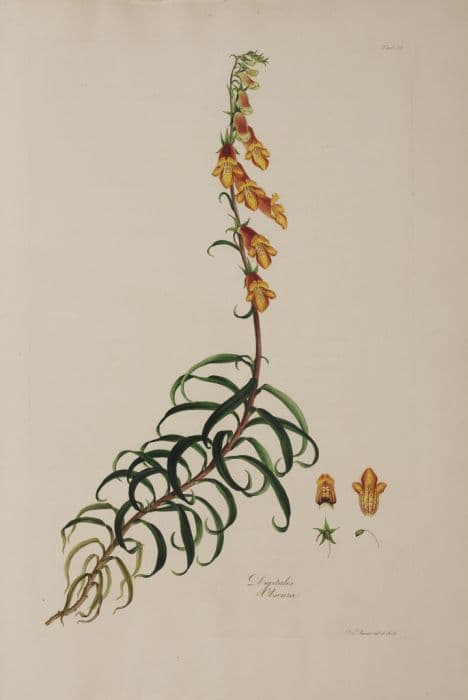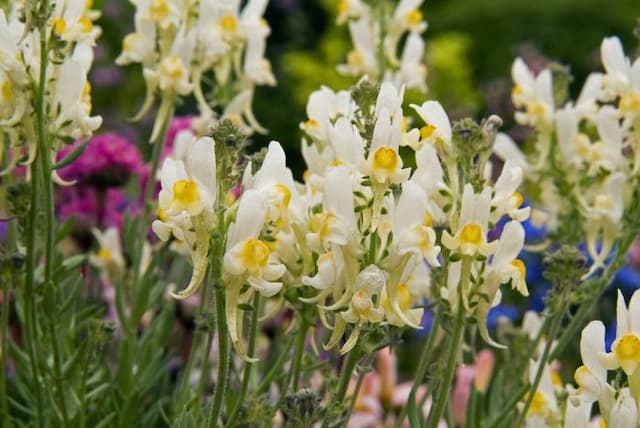Austrian Speedwell Veronica austriaca subsp. teucrium 'Royal Blue'

ABOUT
The Veronica austriaca subsp. teucrium 'Royal Blue', commonly known as Austrian Speedwell 'Royal Blue', features a captivating display of vivid blue flowers. These flowers are arranged in attractive spike-like inflorescences that create a striking contrast against the green foliage. The leaves of Austrian Speedwell are typically lance-shaped, providing a lush backdrop for the blooms. As the name 'Royal Blue' suggests, the color of the flowers is of a deep, regal blue hue that is both intense and eye-catching. The foliage can vary from a deep green to a slightly greyish tone, and it remains attractive throughout the growing season, even when the plant is not in bloom. Overall, this perennial brings a vibrant splash of blue to garden spaces, appealing to gardeners who wish to add a touch of royal elegance to their plantings.
About this plant
 Names
NamesFamily
Plantaginaceae
Synonyms
Broadleaf Speedwell, Austrian Speedwell, Saw-Leaved Speedwell, Large Speedwell, Teucrium Speedwell
Common names
Veronica teucrium, Veronica austriaca var. teucrium, Pseudolysimachion teucrium, Pseudolysimachion teucrium subsp. teucrium.
 Toxicity
ToxicityTo humans
The plant known commonly as Austrian Speedwell is not widely recognized as having significant toxicity to humans. In general, if any part of this plant were ingested, it is not expected to cause serious poisoning. However, individuals can vary in their sensitivity to plant compounds, and it is always advisable to avoid ingesting plants that are not meant for human consumption. Eating non-edible plants can sometimes cause mild stomach upset, nausea, or vomiting due to compounds that may be irritating to the digestive system.
To pets
Austrian Speedwell is not commonly known to be toxic to pets. Ingesting this plant is unlikely to lead to serious poisoning in pets, but as with humans, individual animals can have different sensitivities. Consuming plants that are not part of a pet's diet can sometimes result in mild gastrointestinal distress, such as vomiting or diarrhea. It is always best to keep an eye on your pets and prevent them from eating plants that are not intended for their consumption.
 Characteristics
CharacteristicsLife cycle
Perennials
Foliage type
Semi-deciduous
Color of leaves
Green
Flower color
Blue
Height
1-2 feet (30-60 cm)
Spread
1-2 feet (30-60 cm)
Plant type
Herb
Hardiness zones
4
Native area
Europe
Benefits
 General Benefits
General Benefits- Attracts Pollinators: Veronica austriaca 'Royal Blue' provides a valuable nectar source for bees, butterflies, and other pollinating insects.
- Easy Care: This hardy perennial requires minimal maintenance once established, making it ideal for gardeners of all levels.
- Drought Tolerant: Once established, it is relatively drought-resistant, requiring less watering and care under dry conditions.
- Vibrant Color: With its intense blue flowers, this plant adds a splash of color to garden borders and beds from late spring to early summer.
- Long Blooming: The plant has a lengthy blooming period, ensuring a colorful display for an extended portion of the growing season.
- Cut Flower: The flowers can be used in floral arrangements, providing beauty both in the garden and as part of indoor decor.
- Ground Cover: It can act as a ground cover, filling in gaps and reducing the growth of unwanted weeds.
- Edging Plant: Its compact growth habit makes it suitable for edging paths and borders, contributing structure to the garden design.
- Wildlife Support: It offers a habitat and food source for various insects, contributing to a healthy and diverse ecosystem.
- Winter Interest: Even after the blooms have faded, the plant’s structure can add interest to the winter garden.
- Landscape Versatility: It can be used in a variety of garden styles, from informal cottage gardens to more formal beds and borders.
 Medical Properties
Medical PropertiesThis plant is not used for medical purposes.
 Air-purifying Qualities
Air-purifying QualitiesThis plant is not specifically known for air purifying qualities.
 Other Uses
Other Uses- Veronica austriaca 'Royal Blue' can be used as a natural dye source, producing shades of blue or grey depending on the mordant used.
- The plant's dense growth habit makes it an excellent ground cover, which can help prevent soil erosion in sloped gardens.
- Its long blooming period provides a valuable nectar source for pollinators like bees and butterflies promoting biodiversity.
- Veronica austriaca 'Royal Blue' is suitable for creating intricate garden patterns in knot gardens or parterres due to its striking color and texture.
- Crafters might use the dried flower spikes of this plant in creating everlasting floral arrangements and wreaths.
- The flowers can be used to create ornamental edible garnishes for desserts or salads, as long as they're grown without pesticides.
- It can act as a natural pest repellent in gardens due to its scent, possibly deterring certain insect pests.
- The plant can be used in sensory gardens, as it adds a visual texture and soft touch for sensory engagement.
- Photographers and painters might use Veronica austriaca 'Royal Blue' as a vivid subject or backdrop due to its rich coloration and texture.
- Educational institutions might grow this plant as a tool for teaching botany, specifically plant identification and reproductive biology.
Interesting Facts
 Feng Shui
Feng ShuiThe Austrian Speedwell is not used in Feng Shui practice.
 Zodiac Sign Compitability
Zodiac Sign CompitabilityThe Austrian Speedwell is not used in astrology practice.
 Plant Symbolism
Plant Symbolism- Fidelity: Veronica is often associated with fidelity and loyalty in the language of flowers, possibly due to its persistent and enduring nature.
- Healing: Named after Saint Veronica, who is said to have offered a cloth to Jesus so he could wipe his face on the way to Calvary, the plant is believed to symbolize healing and the easing of burdens.
- Clarity: The clear blue of the 'Royal Blue' flowers suggests clarity of thought and vision, making it symbolic of clear understanding and awareness.
 Water
WaterThe Austrian Speedwell, or Veronica 'Royal Blue', prefers consistent moisture but does not tolerate standing water. Water thoroughly once a week, providing about one inch of water each time. During periods of excessive heat or dryness, additional watering may be necessary. Aim to keep the soil evenly moist but not waterlogged. Adjust the frequency to ensure that the top layer of soil dries out slightly between waterings. Over-watering can lead to root rot, so ensure proper drainage. Use a watering can or hose to water at the base of the plant, avoiding wetting the foliage.
 Light
LightAustrian Speedwell thrives in full sun to partial shade. The ideal spot for this plant is where it will receive at least six hours of direct sunlight daily. It can tolerate some afternoon shade, especially in regions with very hot summers. Avoid placing it in deep shade, as this can lead to leggy growth and fewer flowers.
 Temperature
TemperatureAustrian Speedwell does well in a range of temperatures and can tolerate a minimum temperature of around -30 degrees Fahrenheit, making it suitable for USDA hardiness zones 4 through 8. The ideal growing temperatures for this plant are between 60 and 70 degrees Fahrenheit during the day. It can also withstand higher temperatures as long as it is not exposed to prolonged periods of extreme heat without sufficient water.
 Pruning
PruningAustrian Speedwell benefits from pruning to encourage bushier growth and more blooms. Prune in early spring before the onset of new growth by cutting back the plant by about one-third. Deadhead spent flowers regularly to promote additional blooming. In late fall, after flowering has finished, cut the plant back to just above ground level to prepare it for winter and maintain a tidy appearance.
 Cleaning
CleaningAs needed
 Soil
SoilThe Austrian Speedwell, or 'Royal Blue', thrives in well-draining soil enriched with organic matter. A mix of loam, sand, and compost is ideal, providing good aeration and nutrients. This perennial prefers a slightly acidic to neutral pH between 6.0 and 7.0.
 Repotting
RepottingAustrian Speedwell 'Royal Blue' typically does not require frequent repotting. It should be repotted every 2 to 3 years to refresh the soil and accommodate root growth.
 Humidity & Misting
Humidity & MistingAustrian Speedwell 'Royal Blue' is adaptable to a wide range of humidity levels but prefers moderate conditions. It does not require high humidity to thrive.
 Suitable locations
Suitable locationsIndoor
Place in bright, indirect light and ensure good air circulation.
Outdoor
Plant in full sun to partial shade, spacing about 12-18 inches apart.
Hardiness zone
4-8 USDA
 Life cycle
Life cycleVeronica austriaca subsp. teucrium 'Royal Blue', commonly known as Austrian Speedwell or Large Speedwell, begins its life cycle as a seed, which upon germination develops a root system and a rosette of basal leaves. In the following growth stage, stems elongate, and foliage increases as the plant matures. The next significant stage is the flowering period, usually in late spring to early summer, when it produces spikes of vibrant blue flowers that attract pollinators. After pollination, the flowers develop into small capsules containing seeds that mature, dry out, and finally release the seeds into the surrounding environment. The plant may enter a period of dormancy during the colder months, particularly in colder climates. Year after year, if conditions are suitable, the plant can re-emerge from its rootstock, repeating its life cycle, and it can also spread through self-seeding.
 Propogation
PropogationPropogation time
Spring-Early Summer
The most popular method of propagation for Veronica austriaca subsp. teucrium 'Royal Blue', commonly known as Austrian Speedwell or Royal Blue Veronica, is by division. Division is typically done in early spring or fall. During this process, gardeners will dig up a mature clump of the plant and gently pull or cut it apart into smaller sections, each with several shoots and a healthy portion of roots attached. These sections are then immediately replanted into prepared soil, ensuring that they are spaced appropriately to accommodate the mature size of the plant. Care should be taken to maintain adequate moisture and to avoid planting too deeply—keep the crown of the plant at soil level. This method stimulates fresh growth and can rejuvenate an older plant, often leading to flowering in the subsequent growing season.









![Hebe [Garden Beauty Blue]](/_next/image?url=https%3A%2F%2Fplants-admin.emdemapps.com%2Fimages%2Fplants%2F%2Fimages%2F604b58cbcb4e2.png&w=640&q=75)